Many affiliate marketers face a challenge that causes them all kinds of anxiety and frustration.
They aren’t sure how to find great affiliate programs and get accepted into them.

After reading this post, you will have all the knowledge you need to not only FIND profitable affiliate products to sell, but also present yourself as a valuable affiliate prospect a product owner would be crazy not to snap up!
Sound exciting?
Let’s start in…
We’re going to cover everything you need to know but first, we have to get the THIS out of the way.

You need to make sure you obey the first rule of affiliate marketing.
Get this wrong and NONE of the other stuff matters.
So, listen up…
I am often asked by people, especially by people who are new to affiliate marketing, ‘How do I promote something when I’m not 100% sure that it’s a good fit for my audience?’
Short answer: You can’t.
Shorter answer: Don’t.
It’s that simple.
If you can’t be sure your audience is going to eat it up, forget it.
When you’re selective about what you promote, you gain confidence.
That will come through in your email copy. Your conversations. Everything.
Your job is to present ONLY products that are best for your audience.
Here’s the quick sniff test: Ask yourself…‘Would I recommend this to a friend that I know could use it?’
You can learn more about the all-important first rule of affiliate marketing by watching this video.
Now that’s out of the way…here’s the process you can use to unlock the door to the affiliate program vault!
WAYS TO FIND AFFILIATE PROGRAMS

Here’s the first step: Find one program to start with. Not two. Or five.
ONE.
Why does that matter?
You want to get something rolling quickly. One program allows you to put up sign up page. Create the links. Write your emails.
What’s that Facebook motto? Move fast and break things! That’s who you want to be!
Trying to do too many things at once will result in you getting intimidated. And frozen. Been there.
Here are some places to start looking for your ONE program
1 – Start on the website
The fastest, easiest way to learn if a company has an affiliate program is to use control F (or command F depending on the device you’re using) and start typing in the word “affiliate”, “referral”, “partner” and “program”.
If those four terms don’t kick something up, they likely don’t have an affiliate program. (in a sec, I’ll show what to do if they DON’T have an affiliate program.)
That’s the quickest way to start.
Sometimes, they don’t have an obvious link. Some hide it on their FAQ page. Look for something like, “Do you have an affiliate or referral or partner program?”
If none of those activities produce anything, call them up.

Some just don’t make it public. They WANT you to reach out to them. The reason? If you’re willing to take the time to contact them, they feel you’re a little more motivated.
And, if they DO have a program, it’s likely they’ll be glad to provide you with the information you need to learn more.
2. Try Google
Here’s how to use it: Google the name of the company and then, the words, “affiliate program.”
You might immediately be directed to their affiliate program page. The other thing you might come across is a discussion in a community where people are talking about a specific affiliate program at that company.
Or, you can use Google like this:
Suppose people are constantly asking for recommendations for desks. I get asked that periodically. People see me on Facebook “Live”s and will notice I have a really cool, stand up desk that’s adjustable. It’s a good size and looks great. About once a month, I get people asking what kind of desk I use.
Now, I’m no office supplies expert, but after I tell them about my desk, I direct them to a link I have saved regarding the types of desks that I have.
You could simply Google “desk affiliate programs” and find a good affiliate program.
Here’s an example: In addition to Amazon or Zappos, there are networks that are retail sites that are a good place to recommend a variety of products like “desk warehouse.”
Kinda made that one up but if there is a website, and they have a good affiliate program, I can recommend that even though I don’t have any experience with it. I can simply go by the reviews.
3. Use networks.
An affiliate network can be a network that has different companies (sometimes thousands) within a network and you are signed up with the network. As an affiliate, although you are promoting the individual company, you’re doing so through a network.
Here are four I recommend:
XP Affiliate
XP Affiliate was originally known for its “small retailer” focus. And when I say “small’, I MEAN small.
Like…”Joe’s BBQ Supplies” small.
Over the years, XP Affiliate has evolved to a point where there are some major companies on there now.
Full disclosure: I know the CEO and this is the network I have the most personal experience with. Trust me, XP Affiliate is going to take care of you.
I highly recommend them and it’s a great place to find things to promote. And you sort by Earnings Per Click (EPC) which, ultimately, is the ONLY metric that really matters.
Amazon
You can try Amazon’s “associates” program. It’s easy and it’s trustworthy for the end-user…
…AND it’s AMAZON for heaven’s sake!
Say you’re promoting a book…you just grab a link and you’re done! You’re not going to make a ton of money but think about it this way: if it takes 20 seconds to grab the Amazon link and you make a dollar, then each 20 seconds is worth $4 to me.
I make a lot of money for our coaching and consulting companies but a book is an easy to make four or five bucks over 20 seconds. It’s super easy.
Commission Junction
CJ.com is another XP Affiliate. It started off as more of a bigger company than XP Affiliate. And it’s evolved too. I don’t have the same amount of experience with them but I have had a couple of clients who have their affiliate programs on there.
I’ve talked to many people who’ve had good experiences with them so I feel comfortable recommending them to you.
ClickBank
ClickBank’s speciality is digital products aka info products. There are a lot of “info” product courses promoted on ClickBank.
So those are four networks you can use to find affiliate programs…
Oooops, almost forgot…make sure you try using Social Media.
Just go on and ask people what programs they’re promoting? Ask what’s converting. You can learn about good programs and companies that are treating their customers well using this strategy.
You NEVER know where that will lead…
The very first affiliate promo advertised outside of Amazon was Michael Hyatt’s Five Days to Your Best Year Ever. And that all happened because I tweeted Michael a crazy numbers of times!
WHAT IF THERE IS NO AFFILIATE PROGRAM?
Now, what do you do if you want to promote a company but they have no affiliate program?
Well, the first thing to keep in mind is that you’re running a business to make money.
Let’s assume you’ve gone through all of the things we talked about trying to find out if they have an affiliate program. You looked on their website, Googled them. Tried contacting them. And, nothing.
Then what?
Well, start off by trying to find the most appropriate person to talk to. Typically that’s going to be a director of marketing or it might be the owner, depending on how big the company is.
Reach out to them and ask him or her if they are interested in starting an affiliate program. That’s it.
Your objective, at this point, is simply get a call scheduled.
Once you’re on the call, you want to focus on 5 things:
- Educate: You want to educate them on the benefits of affiliate marketing. They may know nothing about affiliate marketing. Maybe, share a success story. Be sure to focus on THEM and make it clear that you’re going to promote them. Ask them if they’d consider creating an affiliate program and, in the same breath, make sure to let them know you’ll help.
- Offer To Help: Now, I’m not talking about all the technical stuff, but maybe walk them through some of the approaches you’ve seen other affiliate programs do that you like. Point them to this free video of mine that will give them more “how-to” information. Tell them to follow me. Do a little bit of leg work to help them.
- Give Them A Reason: Now, this kinda falls under number one, but I want you to really drive home the point to them that this is a low risk proposition. Explain you’re quite willing to be their guinea pig. You basically say, ‘set me up…you don’t even have to pay me the going rate in your industry. You can pay me a 40% commission and, if you like, you don’t even have to pay me the full commission starting out. I want you to make your money back quickly.’
- Introduce them to others. Tell them about 4 or 5 other people who would be a good fit to promote their program. Say…’not only am I willing to promote this myself, I’ve got at least five other people that I know who would be be interested as well.’ (It might be an idea to reach out to them in advance and say, ‘hey, would you promote this?’) It’s so much easier to start an affiliate program when you have 5 – 15 people who can give it some traction than it is to start with one or two.
- Make it worthwhile. This all goes back to educating them, introducing them to others, giving them a reason and in short, helping them.
By spending time during the phone call and over the ensuing weeks, you just might be able to convince them to do an affiliate program.
Trust me, it’s worth the investment. I’ve heard from many people who were the “first affiliates” for programs who went on to make six figures plus annually…just from those affiliate programs.
HOW TO VIRTUALLY GUARANTEE ACCEPTANCE
When you’re a big name in the industry, have a list of 100,000 or a popular website, getting accepted is a piece of cake.
But what if that ISN’T you? What if you’re not in that crowd and you’re struggling you’re to get accepted? Then what?
Well, I’m going to show you how to virtually guarantee acceptance.
The key is to acceptance is showing a willingness to go the extra mile.
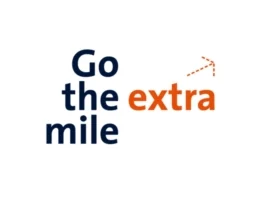
Here’s how you do it…
1. Go Deep
The first thing I want you to do is go deep on your application. Now, one of the ways that you can make this really easy from a practical standpoint is to make sure you take advantage of the efficiency copying and pasting offers when you’re filling out the affiliate application forms.
Let’s face it…the applications are going to ask for the same responses over and over.
Create a document where you keep all of those answers stored so you don’t have to type the same thing over and over again.
Now, here’s what I mean by “going deep”. Say the application asks you to describe your audience. Sure, provide all the general stuff but, periodically, get specific.
That document I suggested you create? I don’t want you to write the exact same thing EVERY time so that it gets to a point where it’s so generic, it’s not appealing.
Change it up. For example, you start off stating ‘my audience is 35 to 50 year old, stay at home moms which is perfect for (whatever site you’re applying to) because of (whatever reason they’re a good fit.)
Then, go deeper. Make your response LONGER.
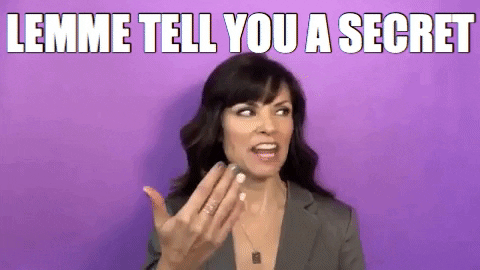
When I see an affiliate application and it’s long and has some real meat in it, I just assume you’re legit and I accept you.
Most affiliate managers are the same way. You’re welcome! 🙂
2. Show Excitement
Get EXCITED about being a part of an affiliate program. As an affiliate manager, I want potential affiliates who are stoked to be a part of my program. I want to see people who are pumped up.
Throwing in a little “We were thinking of 17 different ways we’re going to promote your program!” sends a strong message.
Inject this excitement into your application and the emails you send.
3. Go above and beyond…in EVERYTHING you do.
How? Say they ask you to share a little bit of demographic information. Don’t just give them a little blurb. EXPAND on your demographic information. Talk about where you’re headed.
Here’s how I answer a question like that:
I write to 30 to 50 year old men who are professionals and executives who wrestle with finding the balance between work and life. They struggle to find time with their family.
Then, I go on and list things they’re interested in, what TV shows they watch…I really lay it on. Don’t just answer the question they asked. Respond to the two or three underlying questions that they don’t.
4. Help
Show how you can help them. Be very clear about this. Paint a picture. For example, ‘I have this many people and they’re very focused on this topic and it will help you by putting you in front of them.’
Now, maybe you’re just starting out. You don’t have much of an audience. Maybe you only have 50 people reading your blog. How you can help may not be obvious. Talk about how you’re growing and what you’re doing to grow.
As an affiliate manager, I love people who are starting out because here’s what I know to be true: If I have a hundred affiliates that have 50 people on their lists, ten of them are going to have a list of 5,000 plus within the next five years. One will likely have a list of 100,000 or more and, trust me on this, they will remember that I helped them when he or she was just starting out.
They will remember I treated them like they had a list of 100,000 when they had 56.
They will be loyal to the programs that I’m running and you’re going to want to continue to help them for a long time.
A good affiliate manager will want to work with you if you’re small, as long as you show that you’re working towards growth.
5. Reach out
This all ties in here.
Reach out. Don’t just fill out the application. This is part of going above and beyond. This is part of showing excitement. This is part of doing deep reach out to them.
It’s like applying for a job. Job applicants don’t get selected from job applications.
I’ve hired a hundred people. Never once did I hire anybody from a job application. I hired them because of a relationship or because they showed me they were willing to go to that next step.
Every job I ever got I got was because I reached out via email.
I’ll tell you this quick story… There was a company I was interested in working for. They ran a LinkedIn ad and I saw it. I clicked on the ad. I thought, I can fill out this application OR I could look the lady up and phone her.
You already KNOW what happened next.
She answered and I said, ‘Hey, I just saw your LinkedIn ad. We need to talk.’
She was looking for an affiliate manager and she was blown away. Less than three days later, I had a massive offer from them. In the end, I didn’t go to work for them but still…
If you reach out to after applying, I’m going to accept you.
Inside my No Product No Problem course I share the email template for creating compelling “reach out” emails. Learn more about it here.
If you use the template to create an email to send to me, I’m accepting you 100% of the time. You don’t have to worry about ever getting accepted again.
This is a virtual guarantee of getting accepted. It works 99.9% of the time, and I know that because it works on me and it works on almost every affiliate manager that I have ever known.
So there you go. If you’re struggling with how to get accepted, follow these rules.
Show excitement, go deep. Go above and beyond. Reach out.
IF YOU GET DECLINED
So, you’ve done everything right in your efforts to be signed on to an affiliate program.
And then…you get declined.
Here’s the thing: it’s going to happen… especially when you’re starting out.
Heck, I decline people all the time. Over the years, I’ve probably declined about 20% of the people that apply. Not because I’m a jerk or I take pleasure in keeping the little man down.
Nope. It’s usually because they either don’t seem like they’re a good fit from a topical standpoint or I check out their website and my “spidey senses” start tingling.
There are all types of reasons why people get declined.
Sometimes affiliate managers are jerks. Or they’re just too busy to consider your application. Some don’t have the same philosophy I do. They don’t want to work with small affiliates. If they’re employed by a company, they have quarter-to-quarter, year-to-year goals. They have to focus on the bigger affiliates because they’re worried about the next quarter.
I even KNOW some of the people that I have declined.
Face it, affiliate managers want the best of the best. We want the right people in our program. And, if someone is difficult to deal with, it’s not worth the time.
Sometimes, when I’m on the fence, I’ll decline somebody and then, wait to see if they respond. I would say, about 9 times out of 10, if they DO respond coherently and their message isn’t something like, ‘why you did you decline me?’ or ‘You’re an idiot’, I will approve them.
I’ll give someone a chance because I believe in giving people that chance. If they’re willing to make an effort, they deserve an opportunity to succeed.
So, if you do get declined, don’t get angry. And whatever you do, don’t give up!
Finally, don’t worry, there are always other options.
Let’s say you’re promoting shoes and you get declined by Nike. You can still approach Reebok, Adidas or New Balance or any of the other types of brands out there.
Remember how important it is to show effort.
That, all by itself, can open a lot of doors.

So if you get declined, don’t get mad, don’t give up and don’t worry. There are other options.
HOW TO DECIDE WHAT TO PROMOTE
So what products should you promote?
One day, this won’t be an issue. Eventually you’re going to reach a point where you’ve got people coming to you ASKING you to promote them.
But when you’re starting out, you’re going to have to drum up your own opportunities.
It’s YOUR job to find programs.
I’m going to show you how to use this checklist to identify affiliate programs that are a great fit.
Take a look at the checklist…Beside each statement, score it with a one, two, or three.
A “one” indicates somewhat true. A “three” is absolutely true.
If you feel like putting a zero, don’t waste any more time thinking about promoting it at all.
With this one exception:
Say you have an audience of 82 people or, even 200 people. And nobody’s asking for a product like the one you’re considering. With a small audience, the fact that no one is asking for the product is not surprising. It’s too small a sample. You can’t really draw any meaningful conclusions from this.
But, if you have a list of 100,000 people, and only one person has expressed any interest, that IS a zero.
Just use your judgment on that.
If you have a lot of twos…meaning the statement is mostly true, then you have to consider other things.
Maybe you know, like and trust the creator of the product.
Now again, if you’re just starting out, you might not know. Maybe you’ve heard other good things about the product. Good reviews can elevate its rating.
You can ask to see the marketing…the PLC content. Are the emails any good? Is the marketing too soft or aggressive and way over the top?
If so, you’re not going to make any money.
Shoot for a score of 24. This is likely a go. 15 or less. As for the ones in the middle…like 20 to 23…you have to rely on your gut feeling.
So there you have it…a process for finding affiliates and getting accepted.
Although following the guidelines above won’t guarantee you get accepted every time you apply to be an affiliate, you can bet your “ACCEPTED” rate will soar.
Questions?
Text me anytime at (260) 217-4619.
Or…check out some of my free reports to help you get on the right track:
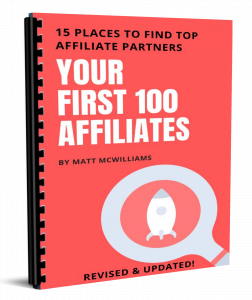 |
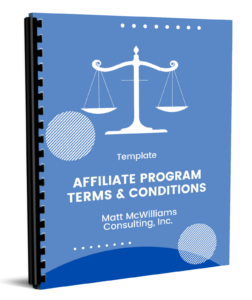 |
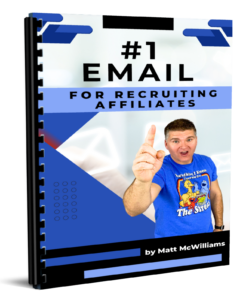 |
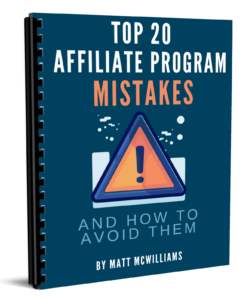 |
 |
 |
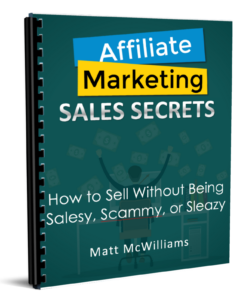 |
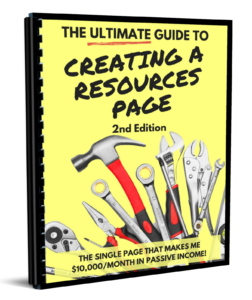 |
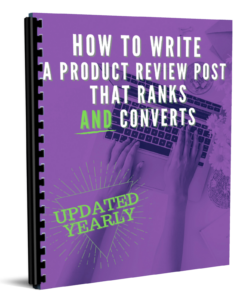 |